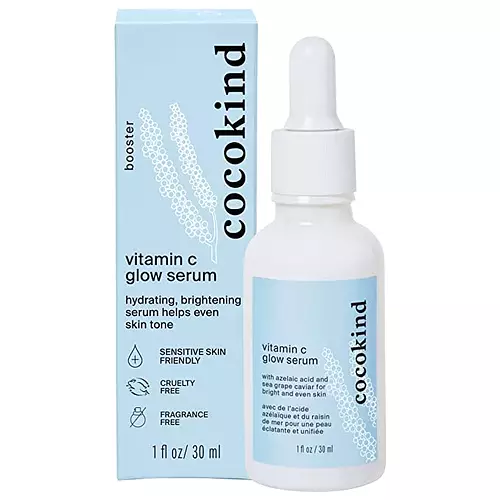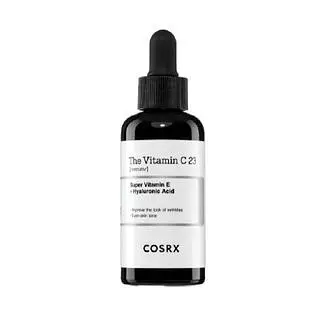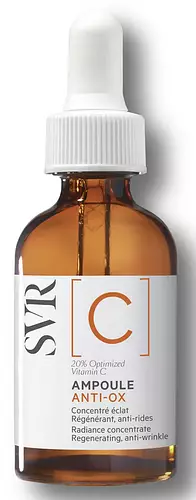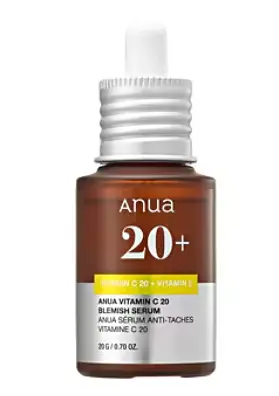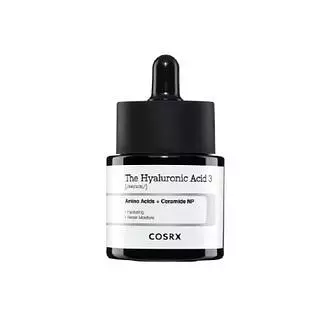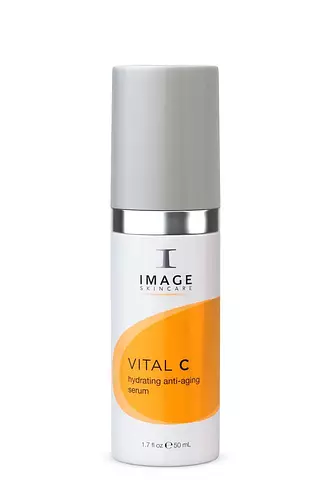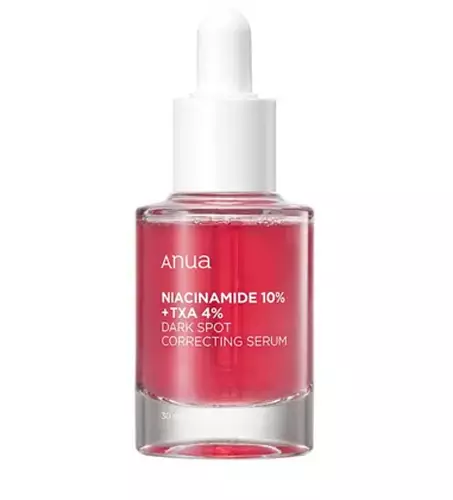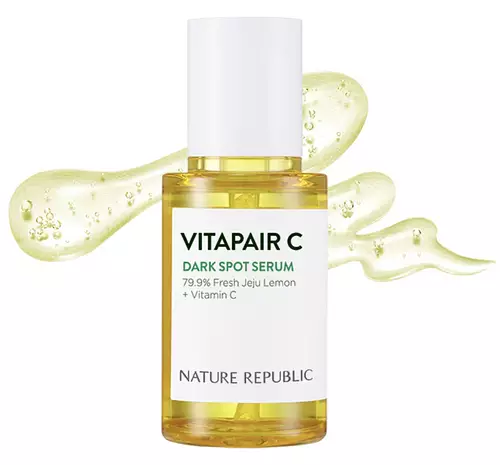Cocokind Vitamin C Glow Serum Versus COSRX The Vitamin C 23 Serum
Updated on June 28, 2024
Overview
What they are
These products are both cruelty-free and reef safe serums. They have a total of 4 ingredients in common
Cool Features
They both contain hyaluronic acid and Vitamin C
Suited For
They're both likely to be good for fighting acne, anti aging, dry skin, brightening skin, sensitive skin, reducing pores, scar healing, dark spots and better texture
Free From
They both do not contain any common allergens, fragrances, parabens or sulfates
We independently verify ingredients, and our claims are backed by peer-reviewed research. Spot a product that needs an update? Let us know.
Ingredient Info
Cocokind Vitamin C Glow Serum 19 ingredients
COSRX The Vitamin C 23 Serum 34 ingredients
At a glance
Click on any of the items below to learn more
Cocokind Vitamin C Glow Serum 19 ingredients
COSRX The Vitamin C 23 Serum 34 ingredients
Notable Ingredients
This product contains 1 ingredient that may have this attribute:
This product contains 1 ingredient that may have this attribute:
Benefits
This product contains 4 ingredients that may have this attribute:
This product contains 2 ingredients that may have this attribute:
This product contains 1 ingredient that may have this attribute:
This product contains 1 ingredient that may have this attribute:
This product contains 1 ingredient that may have this attribute:
This product contains 2 ingredients that may have this attribute:
This product contains 2 ingredients that may have this attribute:
This product contains 1 ingredient that may have this attribute:
This product contains 2 ingredients that may have this attribute:
Notable Ingredients
This product contains 2 ingredients that may have this attribute:
This product contains 1 ingredient that may have this attribute:
This product contains 1 ingredient that may have this attribute:
This product contains 1 ingredient that may have this attribute:
Benefits
This product contains 3 ingredients that may have this attribute:
This product contains 1 ingredient that may have this attribute:
This product contains 3 ingredients that may have this attribute:
This product contains 1 ingredient that may have this attribute:
This product contains 1 ingredient that may have this attribute:
This product contains 3 ingredients that may have this attribute:
This product contains 3 ingredients that may have this attribute:
This product contains 4 ingredients that may have this attribute:
This product contains 1 ingredient that may have this attribute:
This product contains 3 ingredients that may have this attribute:
Concerns
This product contains 2 ingredients that may have this attribute:
This product contains 2 ingredients that may have this attribute:
This product contains 1 ingredient that may have this attribute:
This product contains 2 ingredients that may have this attribute:
This product contains 2 ingredients that may have this attribute:
This product contains 1 ingredient that may have this attribute:
Ingredients Side-by-side
Ingredients Explained
These ingredients are found in both products.
Ingredients higher up in an ingredient list are typically present in a larger amount.
Water. It's the most common cosmetic ingredient of all. You'll usually see it at the top of ingredient lists, meaning that it makes up the largest part of the product.
So why is it so popular? Water most often acts as a solvent - this means that it helps dissolve other ingredients into the formulation.
You'll also recognize water as that liquid we all need to stay alive. If you see this, drink a glass of water. Stay hydrated!
Learn more about WaterPentylene glycol is typically used within a product to thicken it. It also adds a smooth, soft, and moisturizing feel to the product. It is naturally found in plants such as sugar beets.
The hydrophilic trait of Pentylene Glycol makes it a humectant. As a humectant, Pentylene Glycol helps draw moisture from the air to your skin. This can help keep your skin hydrated.
This property also makes Pentylene Glycol a great texture enhancer. It can help thicken or emulsify a product. Emulsifiers help stabilize a product. It does this by preventing certain ingredients from separating.
Pentylene Glycol also acts as a mild preservative and helps to keep a product microbe-free.
Some people may experience mild eye and skin irritation from Pentylene Glycol. We always recommend speaking with a professional about using this ingredient in your routine.
Pentylene Glycol has a low molecular weight and is part of the 1,2-glycol family.
Learn more about Pentylene GlycolPropanediol helps absorb ingredients into your skin, boosting their benefits. It can act as an emollient, making your skin softer. Propanediol can help products last longer by boosting the properties of preservatives within the formulation.
Propanediol is not likely to cause sensitivity and considered safe to use.
It is derived from corn or petroleum with a clear color and no scent.
Learn more about PropanediolSodium Hyaluronate is hyaluronic acid's salt form. It is commonly derived from the sodium salt of hyaluronic acid.
Like hyaluronic acid, it is great at holding water and acts as a humectant. This makes it a great skin hydrating ingredient.
Sodium Hyaluronate is naturally occurring in our bodies and is mostly found in eye fluid and joints.
These are some other common types of Hyaluronic Acid:
Learn more about Sodium HyaluronateIngredient Ratings
Here's what our community thinks of the ingredients in these products.
When to use
Cocokind Vitamin C Glow Serum 19 ingredients
COSRX The Vitamin C 23 Serum 34 ingredients


Reviews
Here's what our community thinks
Cocokind Vitamin C Glow Serum 19 ingredients
khoweird
I love the ingredients in this vitamin c! I’ve been using it daily since the beginning of December and my skin glows more than it did before adding...
I love the ingredients in this vitamin c! I’ve been using it daily since the beginning of December and my skin glows more than it did before adding it to my routine. It smells good and feels great; cooling as it’s going on, a bit tacky after it’s rubbed in, and smooth when it dries. A second bottle is already in my fridge waiting to be used.
johari 🪽
UPDATED 12 July 2024 (TL;DR below):
I think this serum was one of the first products I found using SkinSort’s filters, and it had caught my...
UPDATED 12 July 2024 (TL;DR below):
I think this serum was one of the first products I found using SkinSort’s filters, and it had caught my attention because it kept showing up- even with my ultra-specific filtering! I was looking for a beginner-friendly, non-irritating Vitamin C product. Finding this felt like I’d hit a gold mine. (I was so excited I bought two the first time buying it!) Comes in a classic dropper bottle and, to my standard, is on the pricey side for the quantity you get.
According to Cocokind themselves, this serum will brighten, hydrate, and even out my skin. I mean, yeah, pretty much! The aloe vera juice base is very sensitive skin-friendly and does well with making your skin feel protected and nourished. It does leave your face feeling kind of sticky, but it wasn’t a problem when I applied the serum on semi-wet skin. (That only applies to those who apply their skincare products back-to-back with no pauses in between, which isn’t *really* the way to go.)
The brightening and evening effects of this serum deserve its own attention. I’m actually not giving credit to Ascorbyl Glucoside, which is the Vitamin C derivative highlighted in this serum. The underdog takes the cake in this one: the one, the ONLY… Azelaic Acid!!! I think without it this formula would really fall short. Maybe it’s working overtime because it sorta works in synergy with Vitamin C? (Not 100% sure that applies to derivatives as well…) Either way, I LOVE IT. In just a week, my PIH (i.e. post-inflammatory hyperpigmentation, the stubborn dark spots you get after your pimples go away) started fading..? My skin was brighter..? Me, with my crazy dull skin, waking up to glowing, inflammation-free skin?!?! What kind of *sorcery* is in this?!?!?! (Azelaic acid. c:)
Despite my improved complexion, this serum didn’t quite work in the same way many Vitamin C serums are touted for (i.e. complete skin regeneration). It was more of an acne serum? Which I appreciated, of *course*… but it’s also not why I bought the serum. Yes, it did brighten my skin (and get me loads of compliments!), but my breakouts weren’t any less frequent. It just kind of cleaned up the mess afterwards. Again, can’t be bothered by that, but my goal with this was to heal my compromised skin barrier as a whole. This product was a drop in the bucket. Well, maybe a splash.
Maybe my skin has simply become too resilient for the gentle likes of Vitamin C derivatives… a blessing or a curse? 🤔
TL;DR: Great for brightening PIH (post-inflammatory hyperpigmentation), azelaic acid is the SUPERSTAR in this- not so much the Vitamin C, thick and sticky, very sensitive skin-friendly :)
Old review:
Very gentle. Love the aloe vera base, suitable for all skin types. Been using mostly consistently for a few months and have seen improvements in hyperpigmentation.
COSRX The Vitamin C 23 Serum 34 ingredients
Laila
I didn't like the consistency of this serum at all.
It felt like I was putting oil to my face, but since I always use the whole product to see...
I didn't like the consistency of this serum at all.
It felt like I was putting oil to my face, but since I always use the whole product to see results this did nothing to me other than feeling uncomfortable.
ChienYun_CY
Cured my acne scars
I had mix feelings when I first bought this as I read that the smell can be off-putting. But I am glad I bought it. My acne...
Cured my acne scars
I had mix feelings when I first bought this as I read that the smell can be off-putting. But I am glad I bought it. My acne scars faded a lot more after 3 days of using it and saw great results in one week. It also didn't break me out despite containing alcohols and oils. It does sting a little on the first application but doesn't irritate my skin. The smell can be quite strong when you first spread it on, but it slowly goes away after awhile.
